Abstract
Lead acetate was administered continuously in the drinking water to CD–1 male mice beginning at 4 weeks of age. An LD10–20 of the lytic viruses or 300 plaque-forming units of RLV was inoculated intrapertioneally at 6 weeks of age. Lead increased the response of the mice to all classes of viruses against which it was tested: an RNA picornavirus-encephalomyocarditis (EMCV), a DNA herpesvirus-pseudoribies, an RNA leukemia-virus-Rauscher leukemia (RLV), an RNA arbovirus B-St. Louis encephalitis, and an RNA arbovirus A-western encephalitis. Most studies were performed between lead and EMCV. Increases in EMCV mortality in lead treated mice over controls ranged from 2× at a lead level of 0.004M to 7× (100% mortality) at a 0.1M lead level. Splenomegaly with spleens 800 to 1100 mg in weight containing high titers of RLV occurred in lead (0.03M)-treated mice 3 and 6 weeks after RLV inoculation; spleens or RLV controls were normal in weight (200 mg) and were free of virus. Lead did not reduce the protective effect of mouse interferon (IF) against the lethal action of EMCV, but it did repress the EMCV antiviral effect of poly I/poly C (PIC) and of Newcastle disease virus (NDV) against EMCV mortality. These data indicate several new facts concerning adverse effects lead may have on an animal: (1) lead aggravates viral disease, most likely in part, through reduced IF synthesis; (2) lead represses the anti-EMCV protective effects of both PIC and of NDV, which, in other reports, were shown to induce IF in radioresistant macrophages (PIC) or in radiosensitive lymphocytes (NDV); (3) lead may then be said to repress IF induction in two kinds of cells; (4) however, lead does not inhibit IF action.
Full text
PDF
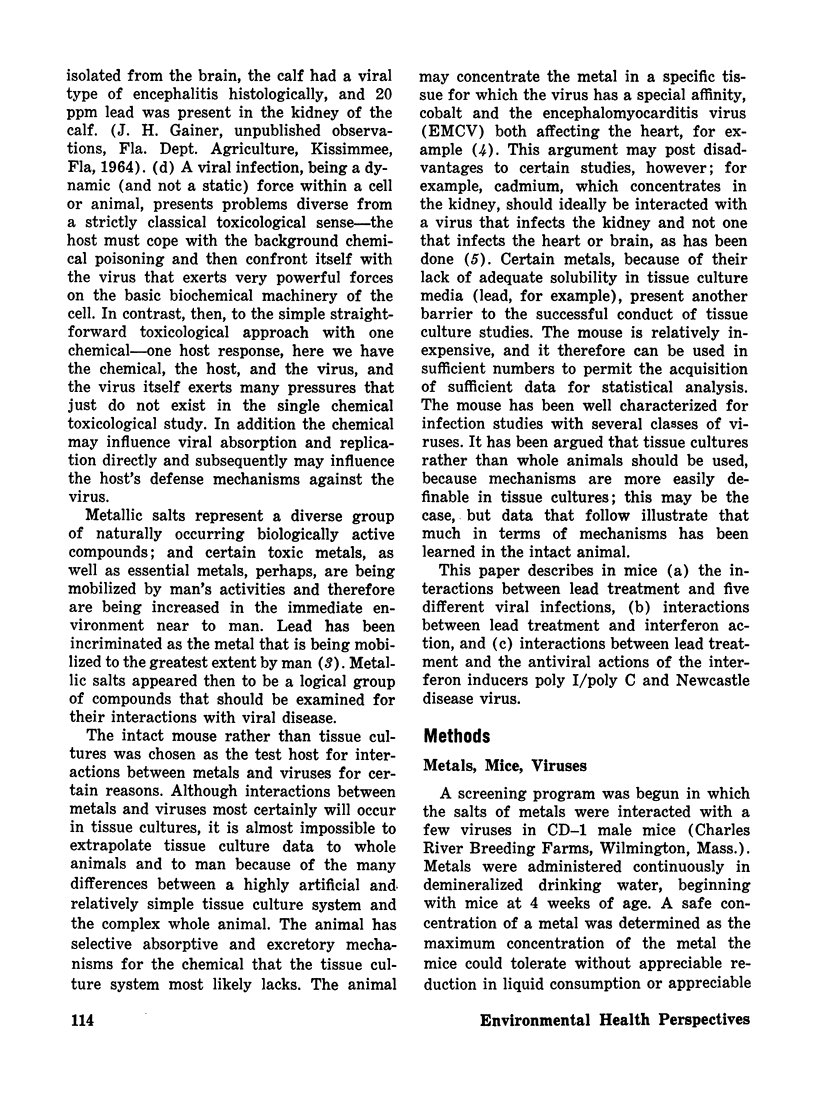
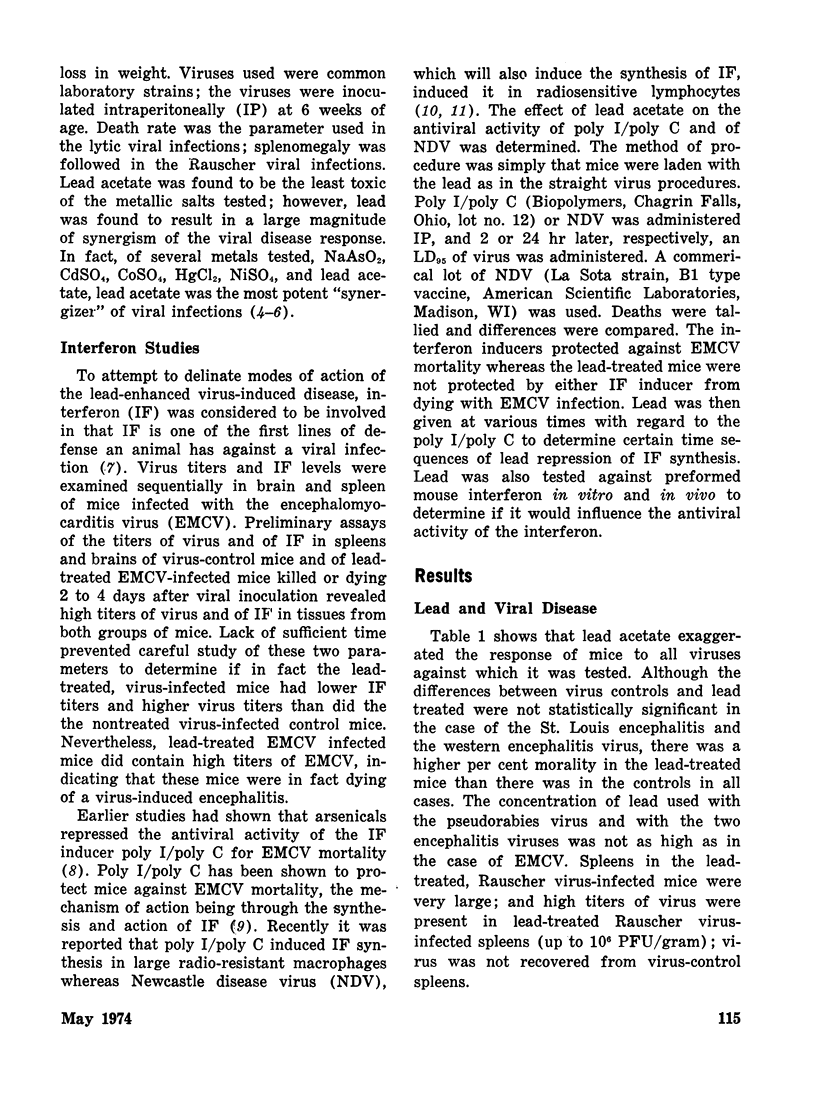
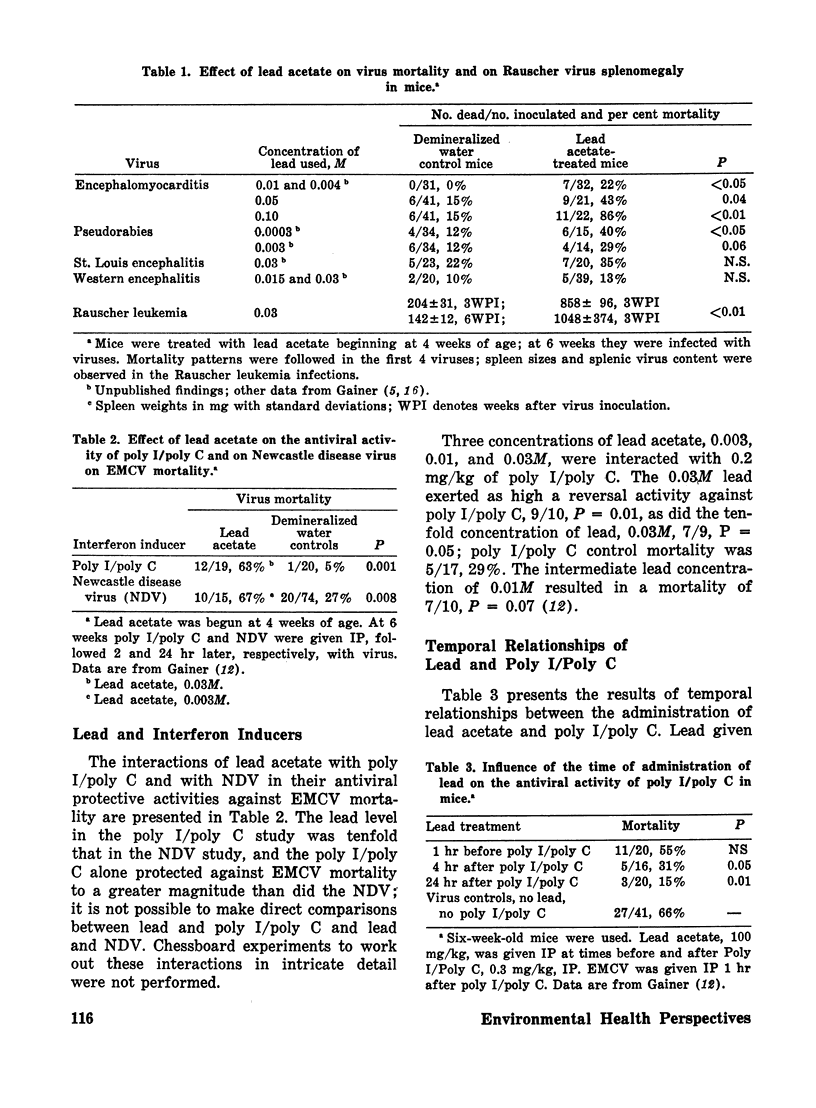
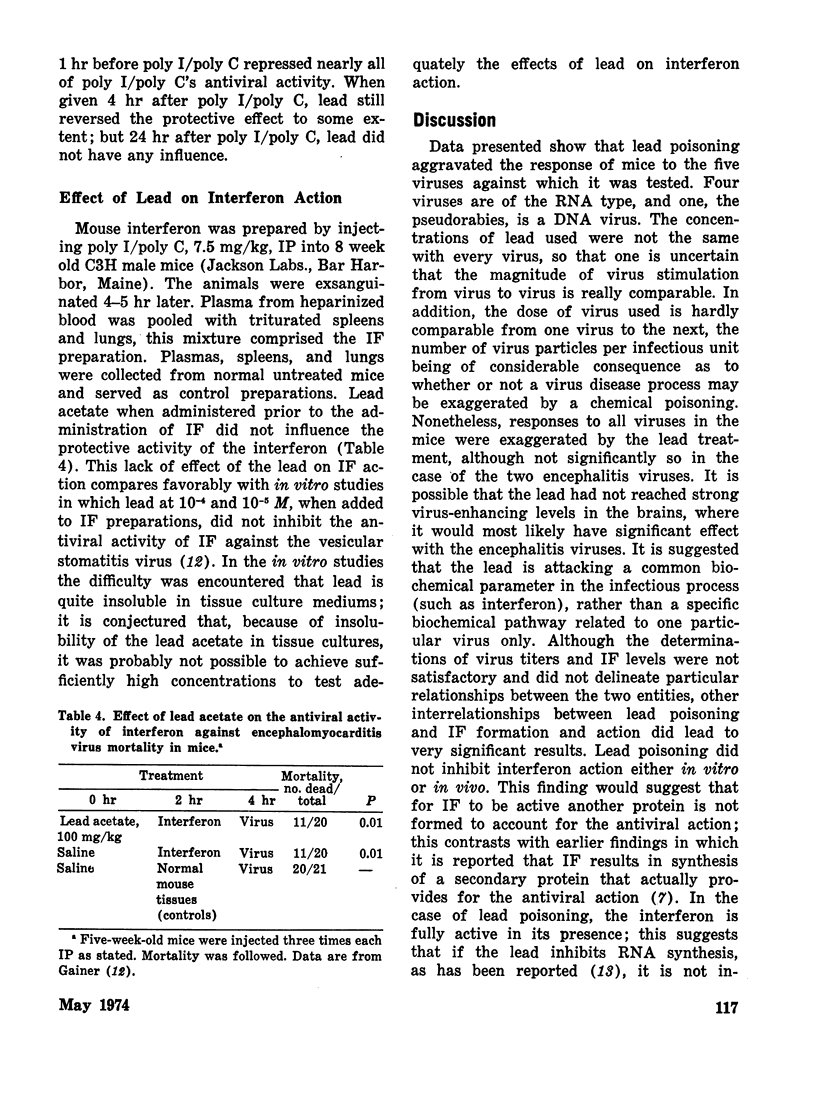
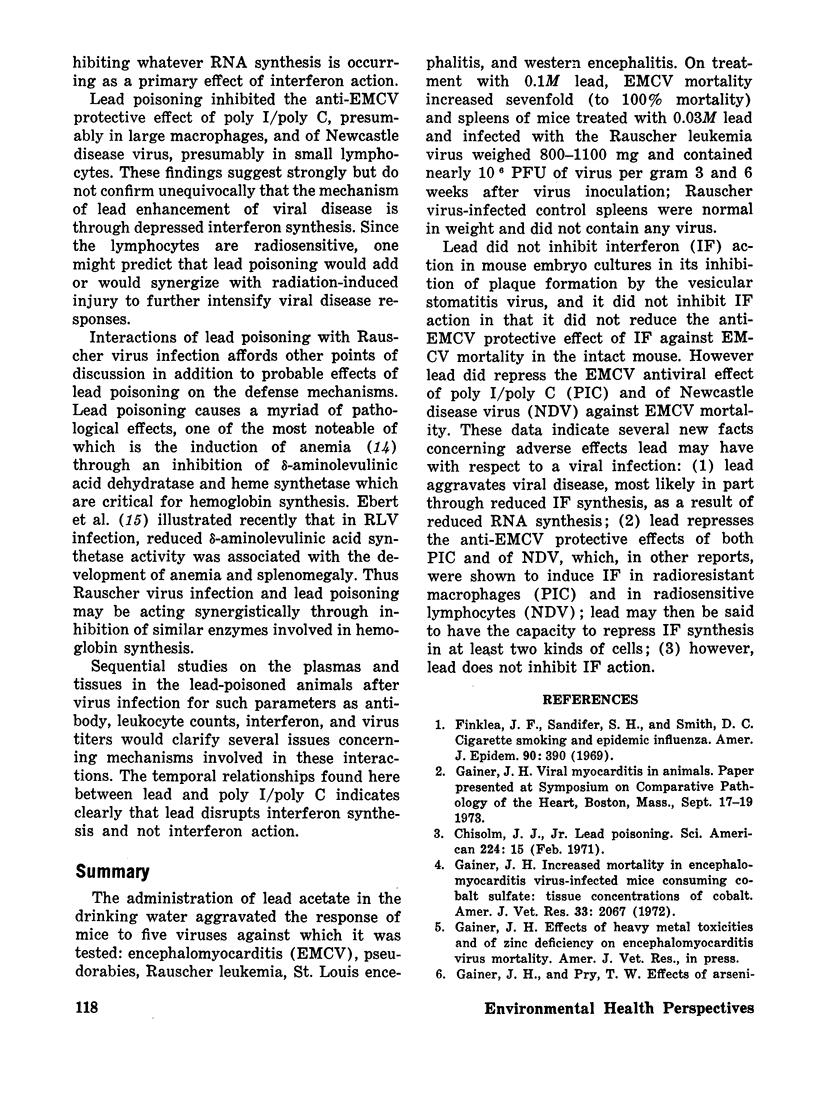

Selected References
These references are in PubMed. This may not be the complete list of references from this article.
- De Maeyer-Guignard J. Mouse leukemia: depression of serum interferon production. Science. 1972 Sep 1;177(4051):797–799. doi: 10.1126/science.177.4051.797. [DOI] [PubMed] [Google Scholar]
- Ebert P. S., Maestri N. E., Chirigos M. A. Erythropoietic responses of mice to infection with Rauscher leukemia virus. Cancer Res. 1972 Jan;32(1):41–47. [PubMed] [Google Scholar]
- Farkas W. R., Hewins S., Welch J. W. Effects of plumbous ion on some functions of transfer RNA. Chem Biol Interact. 1972 Aug;5(3):191–200. doi: 10.1016/0009-2797(72)90054-3. [DOI] [PubMed] [Google Scholar]
- Field A. K., Tytell A. A., Lampson G. P., Hilleman M. R. Inducers of interferon and host resistance. II. Multistranded synthetic polynucleotide complexes. Proc Natl Acad Sci U S A. 1967 Sep;58(3):1004–1010. doi: 10.1073/pnas.58.3.1004. [DOI] [PMC free article] [PubMed] [Google Scholar]
- Gainer J. H. Activation of the Rauscher leukemia virus by metals. J Natl Cancer Inst. 1973 Aug;51(2):609–613. [PubMed] [Google Scholar]
- Gainer J. H. Effects of arsenicals on interferon formation and action. Am J Vet Res. 1972 Dec;33(12):2579–2586. [PubMed] [Google Scholar]
- Gainer J. H. Increased mortality in encephalomyocarditis virus-infected mice consuming cobalt sulfate: tissue concentrations of cobalt. Am J Vet Res. 1972 Oct;33(10):2067–2073. [PubMed] [Google Scholar]
- de Bruin A. Certain biological effects of lead upon the animal organism. Arch Environ Health. 1971 Oct;23(4):249–264. doi: 10.1080/00039896.1971.10665996. [DOI] [PubMed] [Google Scholar]


